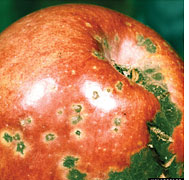A deadly new and virulent fungus capable of affecting wheat crop has been detected in Iran, a major cereal growing area in West Asia. The fungus was previously found in East Africa and Yemen and has now moved to Iran, according to Food and Agriculture Organisation (FAO). The fungus is capable of destroying entire fields of wheat crop. The report could further push up global wheat prices by at least 10-15 per cent. In the spot retail market, wheat prices have surged by 40 per cent in last one year on global shortage. Countries such as Afghanistan, India, Pakistan, Turkmenistan, Uzbekistan and Kazakhstan, all major wheat producers, are most threatened by the fungus and should be on high alert as the fungus can travel to these areas thus affecting the entire output, FAO said. It is estimated that as much as 80 per cent of all wheat varieties planted in Asia and Africa are susceptible to the wheat stem rust (Puccinia graminis). The spores of wheat rust are mostly carried by wind over long distances and across continents. "The detection of the fungus in Iran is very worrisome,' said Shivaji Pandey, director of FAO's plant production and protection division. According to the Iran government, the fungus has been detected in some localities in Broujerd and Hamedan in western Iran. Laboratory tests have confirmed the presence of the fungus. The fungus first emerged in Uganda in 1999 and is therefore called Ug99. The wind-borne transboundary pest subsequently spread to Kenya and Ethiopia. In 2007, an FAO mission confirmed for the first time that Ug99 has affected wheat fields in Yemen. The Ug99 strain found in Yemen was more virulent than the one found in East Africa. Ethiopia and Kenya had serious wheat rust epidemics in 2007 with considerable yield losses. Global wheat production is estimated at 603 million tonnes in 2007, up 1.2 per cent from 2006. In Asia, the output is estimated to rise by 1.7 per cent to 928 million tonnes in 2007 compared with 912.6 million tonnes last year. Global wheat prices have strengthened since December. Tight export supplies amid strong demand continued to provide support to cereal markets. International grain prices benefited from the weak US dollar, which increases the demand for the US wheat, and a sharp decline in freight rates, which helped accelerating purchasing activities by several countries in recent weeks. Export restrictions by China and the Russian Federation coupled with the closure of the export registry in Argentina also provided support.



